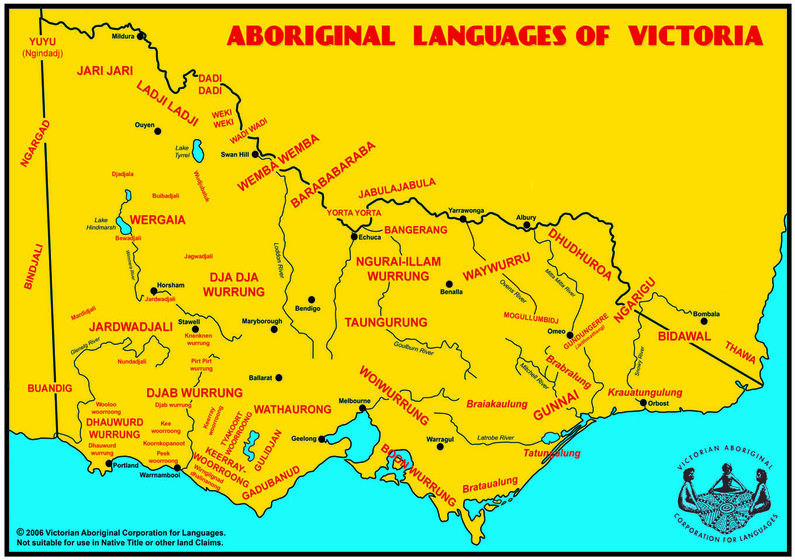Prior to colonisation there were approximately 250 Indigenous languages spoken in Australia - approximately 38 in Victoria.
Some of these had several varieties, and there were altogether about 500 language varieties used across Australia. Before settlement Indigenous individuals were capable of speaking five or more languages fluently. When two people met, they could identify the region each came from by the way they spoke.
The boundaries between one language area and another are not distinct. Rather, mixtures of vocabulary and grammatical construction exist in such regions, and so linguistic maps may show some variation about where one language ends and another begins. Many Australian Indigenous languages have declined to a critical state. More than three-quarters of the original Australian languages have already been lost, and the survival of almost all of the remaining languages are extremely threatened. Language is a part of Indigenous culture, and knowledge about culture is a means of empowering people.
Language contributes to the wellbeing of Aboriginal communities, strengthens ties between elders and young people and improves education in general for Indigenous people of all ages. Today, Indigenous communities throughout Victoria, supported by VACL, are reviving their languages through language camps, workshops, school programs and educational material for children, music and dictionaries. For further information, please visit www.vaclang.org.au
Note: this map is not suitable for Native Title claims.


